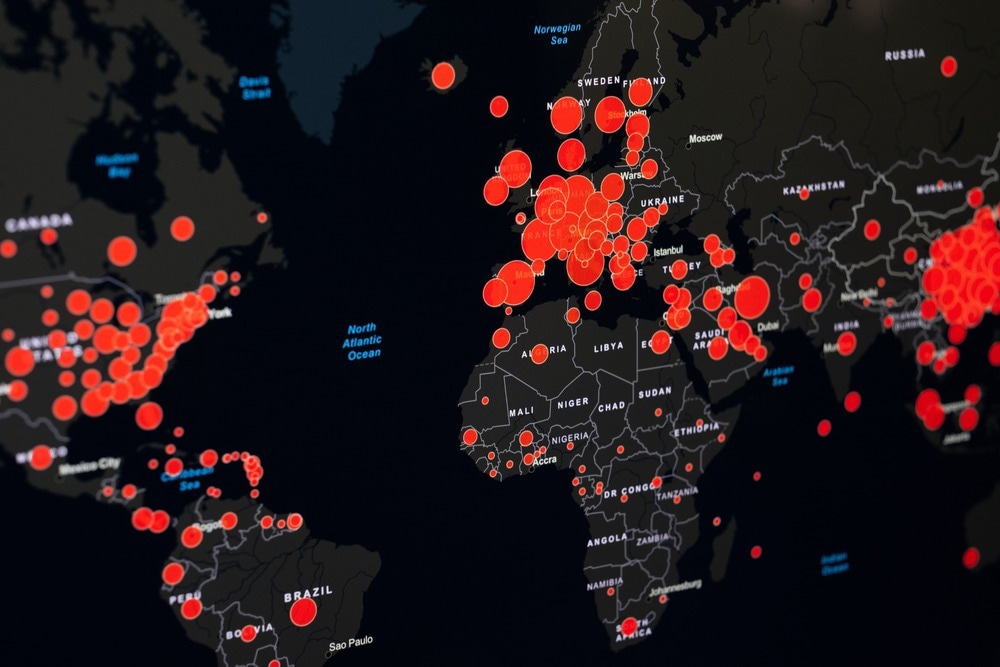In a recent study published in Morbidity and Mortality Weekly Report, researchers examine coronavirus disease 2019 (COVID-19) mortality and vaccination progress in older adults worldwide.

Study: COVID-19 Mortality and Progress Toward Vaccinating Older Adults — World Health Organization, Worldwide, 2020–2022. Image Credit: VK Studio / Shutterstock.com
Background
COVID-19 was designated a public health emergency in January 2020 after the severe acute respiratory syndrome coronavirus 2 (SARS-CoV-2) emerged in late 2019. Analysis of the early Wuhan outbreak revealed that about 80% of deaths occurred in older individuals over the age of 60.
The World Health Organization (WHO) described the general objectives, principles, and priorities for supporting countries to implement vaccine rollout and minimize severe illness and deaths. The WHO updated the strategy brief to prioritize vaccination of at-risk populations with a 100% primary vaccination goal.
About the study
The present study examined age-specific mortality and vaccination coverage in older adults.
The team used a country-specific daily number of COVID-19 cases and deaths (aggregate surveillance), weekly sex, age, and healthcare worker status of cases and deaths (detailed reporting), and excess COVID-19 deaths modeled by the WHO. The ratio of country-specific excess deaths to the aggregate reported deaths were geographically mapped to reflect mortality differences by the data source.
The excess mortality model was used to determine mortality rate and relative risk for individuals aged 60 or older, which was stratified by World Bank income groups. Forty countries were excluded from the analysis, as they did not report coverage for older individuals in 2021 and 2022. The daily aggregate surveillance recorded 5.4 million COVID-19-related deaths as compared to 2.5 million deaths through weekly reporting between January 2020 and December 2021.
Study findings
The WHO model revealed 14.9 million excess deaths. Mortality rates were markedly elevated in older age groups, with 80% of deaths occurring in those over the age of 60 through weekly surveillance and 82% in the WHO model. Excess mortality estimates exceeded the total deaths reported through aggregate surveillance by more than 10-fold for 73% of low-income and 31% of lower-middle-income countries.
This difference was less than two-fold for most high-income countries. Notwithstanding, cumulative deaths and mortality rates were higher in those of an older age across income groups.
Around 52% of excess mortality, which translates into 1,039 excess deaths per 100,000 individuals each year, were documented in lower-middle-income countries. Vaccination coverage was reported at least once to the WHO by 154 countries as of December 2022.
The median primary vaccination series coverage was 59% in the overall population. The median coverage of only high-income countries was higher than the global target for the overall population.
The median primary series coverage was 76% among older adults. Vaccination coverage in older adults was the same or lower than overall coverage in 36 countries.
Conclusions
COVID-19-associated mortality rates and excess deaths were more than 80% of overall reported deaths in older adults, which is consistent with early COVID-19 mortality patterns in China. This large disparity between reported deaths and excess mortality estimates makes it difficult to estimate actual mortality rates.
Given the bias in COVID-19 deaths, WHO-modeled estimates of excess deaths might provide a better measure of the impact of the COVID-19 pandemic.
Journal reference:
- Wong, M. K., Brooks, D. J., Ikejezie, J., et al. (2023). COVID-19 Mortality and Progress Toward Vaccinating Older Adults — World Health Organization, Worldwide, 2020–2022. Morbidity and Mortality Weekly Report. doi:10.15585/mmwr.mm7205a1